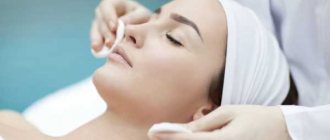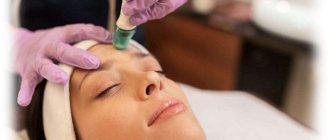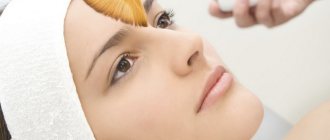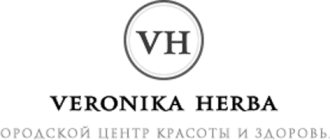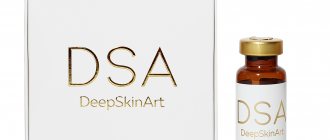Is it possible to perform a chemical procedure on the face during menstruation?
Critical days are often the cause of malaise and poor health. This is a time of stress for the body, as hormonal changes occur. On such days it is better not to peel.
But the modern rhythm of life does not always allow choosing a favorable time. If the procedure cannot be postponed, then it is worth choosing the depth of impact on the skin.
During menstruation, it is better to focus on superficial, delicate methods of care. Next, we’ll look at what types of peelings can be done and what procedures are best avoided.
Permitted species
On critical days, only peelings with gentle ingredients and minimal trauma to the skin are allowed. These types of peelings include:
- scrub;
- phytic;
- glycolic;
- enzyme;
- ultrasonic;
- gluconic;
- lactobionic;
- dairy;
- fruit;
- wine;
- almond.
These procedures have a mild effect, but at the same time refresh the complexion, improve skin tone and cleanse pores. But it should be remembered that the pain threshold during menstruation decreases, so even gentle procedures may seem very painful. In some cases, it is possible to take a painkiller before peeling, but first consult with a specialist.
Prohibited species
Deep peeling combats serious skin problems, which is why many cosmetologists equate deep peeling with the simplest types of plastic surgery. Such intervention requires caution.
We recommend: All about the benefits and harms of facial peeling. Who should perform the procedure and when?
If the skin is deeply exposed during menstruation, negative consequences may occur. Therefore, on critical days it is strictly not recommended to carry out the following types of peelings:
- laser rejuvenation;
- peelings with aggressive acid compounds;
- diamond grinding;
- microcrystalline dermabrasion;
- mechanical impact.
If you carry out such types of peeling in “these days”, the result can be very unpredictable, and recovery from intervention in the deep layers of the skin can take a long time.
What peelings are prohibited during menstruation?
Some types of peeling done during menstruation can provoke the occurrence of:
- scars and swelling;
- swelling and pigmentation;
- serious skin diseases;
- development of infections.
During a woman's illness, it is highly not recommended to do the following:
- laser rejuvenation;
- acid peeling;
- diamond grinding;
- microcrystalline dermabrasion;
- mechanical impact.
During deep and medium cleaning, negative consequences may occur; they will need to be eliminated over a long period of time. You can do a chemical peel, but it is better to postpone the procedure.
Which half of the cycle is best?
Do you want to get the maximum effect from peeling? Make an appointment with a cosmetologist on certain days of your cycle. The most favorable days of the cycle for peeling are considered to be from the 14th to the 19th. At this time, the body is most prepared to deal with stress factors.
Within a week and a half after the start of menstruation, hormonal levels and the functioning of the sebaceous glands normalize. The procedure in the middle of the cycle is most favorable, because during this period the risk of unwanted complications is minimal.
After exposure to lasers, chemicals and mechanical interventions, the skin recovers faster, the healing process is more active, and the risk of infections is reduced. Controlling your cycle and choosing the optimal days will allow you to carry out the procedure as comfortably and painlessly as possible.
Keep in mind that in the last days of the cycle the pain threshold decreases and the recovery time of the skin after the procedure increases. There is no point in peeling during this period.
What is biorevitalization
Biorevitalization is an injection procedure aimed at increasing the hydration and resourcefulness of the skin. For the procedure, preparations with a high content of hyaluronic acid (HA) are used. Since hyaluronic acid is a natural component found in our skin, HA coming from outside is absorbed organically by the tissues. Replenishing its deficiency increases hydration, improves the protective functions of the skin, and promotes rapid regeneration. Injections of hyaluronic acid prevent pigmentation and ensure healthy metabolism. The concept of “biorevitalization” stands for natural revitalization and revival of the skin.
HA injections are carried out in the face, neck, décolleté, hands, elbows, and intimate area.
Procedures need to be done in a course. Subsequently, biorevitalization is prescribed to maintain the result once every six months to a year. This will help the skin remain beautiful and youthful for a long time. Biorevitalization with hyaluronic acid can enhance the effect of laser procedures. With a comprehensive rejuvenating effect, the laser has a slight drawback - under its influence, moisture evaporates from the skin. To restore its balance, HA injections are prescribed: before or after a course of laser rejuvenation.
Advantages of the method
- speed and comfort of the procedure;
- only a few procedures are required to achieve long-lasting, noticeable results;
- rejuvenation occurs naturally - HA is a 100% natural component;
- the procedure can be done at any time of the year;
- biorevitalization solves a wide range of aesthetic problems;
- with its help you can easily get rid of rashes, dryness, peeling, redness and other discomfort associated with the skin;
- the procedure can be performed on men and women after 25 years;
- there are very few contraindications to injections;
- long lasting results that will always meet your expectations.
Contraindications for use
The peeling procedure has a number of contraindications. You should familiarize yourself with their list before signing up for the procedure. You should not peel if you have been diagnosed with:
- Chronic skin diseases in the acute stage. For example, psoriasis or neurodermatitis. Even if there is no exacerbation at the moment, it is still better to consult a dermatologist.
- Malignant neoplasms of the skin.
- Low blood clotting.
- Allergic reactions. If you are prone to allergies, ask a specialist to test your individual tolerance to peeling preparations before the procedure.
- Acute skin diseases: herpes, pustular lesions.
- Infections accompanied by elevated body temperature.
- Pregnancy and lactation period. During this period, the woman’s body is in a special hormonal state, which can unpredictably affect the effect of the procedure.
We recommend: All about washcloths for body exfoliation. Types, features, advantages
If you have any doubts about the safety of the procedure for your body, be sure to consult with your doctor. Do not neglect your health and consider any risks.
Benefits of the procedure
Peeling is the process of removing the upper layers of skin—the epidermis. It is carried out using various additional devices - chemical solutions, special compounds or devices, etc.
Every day, epidermal cells die, and new ones are formed under them. But by a certain time, the upper ones, no longer viable, create a “muff” effect for the face and the whole body. As a result, the growth of new cells slows down, wrinkles appear and deepen, and the skin color acquires a grayish tint. All this does not make a woman more attractive. Peeling helps remove the “muff”, giving youthful and pleasant appearance to the skin. This procedure can also help you get rid of small scars, acne marks, etc.
Indications for the peeling procedure
Possible complications
During critical days, a complete restructuring of the body occurs. Sensitivity to pain increases, immunity decreases and blood clotting decreases. In addition, the work of the sebaceous glands increases, which can lead to inflammation. This is why cosmetologists recommend avoiding traumatic procedures.
Low blood clotting during menstruation can cause severe bleeding of the skin during intervention in the deep layers of the epidermis.
Formally, menstruation is not a contraindication for peeling. But performing deep peels during menstruation can have negative consequences in the future. The reaction of facial skin to a traumatic intervention can be completely unpredictable.
It is likely that the expected effect of the procedure will not be what you would like.
Possible complications from peeling during menstruation include:
- formation of scars and swelling;
- development of pigmentation and inflammation;
- increasing the duration of healing and skin renewal;
- spread of skin infections;
- the appearance of purulent inflammation.
Features of body restructuring
Menstruation causes ailments and poor health in women. The endocrine and reproductive system is responsible for the state of hormones in the body and blood. During menstruation, a hormonal imbalance occurs, the condition of the skin rapidly deteriorates, and sensitivity to painful sensations increases. After the end of menstruation, such worries disappear.
Decreased immunity, instability of hormones and their constant fluctuations, and a high pain threshold are the reasons why it is not advisable to carry out certain types of peeling during menstruation.
Advice and recommendations from gynecologists and cosmetologists
The question of peeling during menstruation is the most common. Experts have formulated tips for using a cleansing procedure during menstruation:
- During critical days, peeling is not recommended. But if it is not possible to reschedule your visit to a cosmetologist to another day, then choose a superficial type of peeling. Gentle cleaning is less traumatic for the body during critical days.
- Choose a time for peeling in advance. This is an important step in caring for your skin. Plan the procedure for the middle of the menstrual cycle. One and a half to two weeks after the start of your period, you will improve your skin condition much more effectively.
- Experts advise choosing a peel for your skin based on the phase of your cycle. In addition, when performing peeling, you should take into account your skin type and its current condition. A cosmetologist or dermatologist with appropriate qualifications will be able to select the appropriate type of treatment.
- Do not perform peelings with deep intervention during your period. Not only will you waste money and not get the results you want, but you may also face negative consequences.
We recommend: List of contraindications for facial peeling. Who should not undergo the procedure and what complications may occur?
Peeling is a highly effective procedure that allows you to cope with many skin problems. But you should choose such a procedure only after fully studying all the nuances and contraindications. To achieve the best effect, you should plan your peeling taking into account your menstrual cycle. Peeling before and during menstruation is strictly not recommended. The optimal time for skin exfoliation is the middle of the cycle.
What peelings are allowed during menstruation?
During menstruation, you can do delicate peeling. It is advisable to avoid laser and chemical procedures. To prevent negative consequences for the female body, gynecologists advise performing only gentle peels.
Superficial types of cleansing during menstruation can be:
- phytic;
- scrub;
- glycolic;
- gluconic;
- ultrasonic;
- dairy;
- apple.
Such procedures cause minor injuries, because they contain only gentle components. An easy procedure improves complexion, refreshes the skin and cleanses pores, preventing the occurrence of inflammatory processes.
Types of peelings
Peeling differs in the method and depth of exposure. Ultimately, only a specialist can choose the right type for a particular woman. The choice depends not only on the properties of the skin and the required degree of cleansing, but also on the time of year, state of health, etc. Each type has its own advantages and disadvantages.
The impact can be concentrated on the superficial, middle and deep layers of the epidermis. Light peeling does not entail complications in most cases. It is suitable for cleansing the skin and eliminating small wrinkles. Deep can also cope with serious facial folds, but complications from it are more frequent, and the healing process takes longer.
Mechanical peeling
This variety is available to everyone. It is enough to take the sediment from insoluble coffee - and the peeling scrub is ready. Exfoliation of the layers of the epidermis occurs under the influence of friction between the skin with a special composition. Typically, crushed peach pits, coffee, sugar, etc. are added to such scrubs. And sometimes special synthetic components, for example, silicone balls, play this role.
Mechanical peeling can also be carried out using various brushes (brushing) and cosmetic cutters. In the latter case, the procedure is called microdermabrasion.
The obvious advantage of mechanical peeling is its accessibility, the ability to use it at home with minimal knowledge about skin care. During the procedure, only the most superficial cells of the epidermis are removed, so the likelihood of complications and unpleasant consequences (redness, swelling, etc.) is extremely low.
Some girls wonder whether it is possible to do almond peeling during menstruation. Since the damaging effects are minimal, this procedure can be carried out without risk on any day of the cycle.
Chemical peeling
This type of procedure is carried out using various chemical reagents. The essence of chemical peeling comes down to treating the skin with acid solutions. The result is a slight burn of the surface layer. After some time, these epidermal cells slough off, allowing for enhanced regeneration of the underlying layers.
The advantage of chemical peeling is the ease of use of the technique and relative affordability.
The most primitive type is using gommage. Each girl can purchase the composition and carry out the procedures independently at home. But this is only superficial skin cleansing.
With the help of fruit and milk mixtures, as well as formulations based on retinoic acid, it is possible to treat deeper layers, but this is still a superficial peeling. You can even make some of these lotions yourself.
Trichloroacetic acid and phenol are also used for medium and deep peeling, respectively. The effect of them, of course, is more noticeable: the appearance of crow's feet and other fine wrinkles can be significantly reduced. But there is also a danger in performing the procedures. Illiterate and careless actions can lead to deep skin burns and the appearance of dark spots. You should also avoid chemical peeling during your period. At this time, all tissues have less ability to regenerate, and the skin is more sensitive to the effects of aggressive substances.
Useful video about the peeling procedure
To learn how chemical peeling is performed and its results, watch this video:
Hardware peeling
These types of effects on a woman’s skin involve the use of laser and ultrasound devices.
As a result, the layers of the epidermis are destroyed, which stimulates the growth and maturation of new cells, as well as collagen and elastic fibers. As a result, the skin acquires a youthful appearance, fine wrinkles, unevenness, and age spots disappear.
Superficial peeling is carried out using an erbium laser. And medium and deep are based on carbon dioxide. Sometimes local anesthesia is necessary for the procedure. After laser peeling, it takes time for the skin to recover; it varies from several weeks to months. But in most cases, small troubles are worth the result that can be obtained in the end.
Physical peeling
This includes cryotherapy. As a result of exposure to cold on the skin, its upper layers die and subsequently peel off. As a result, regeneration mechanisms are activated, which entails the effect of rejuvenation and freshness.
How to reduce pain
Even in the absence of pathologies, it is useful to know how to reduce pain during menstruation. After all, by following a number of simple recommendations, you can significantly reduce discomfort. If your lower back and stomach hurt before your period, you should:
- reduce the amount of stress;
- exclude heavy foods and foods that cause fermentation in the stomach;
- give up alcohol and smoking;
- maintain a good sleep schedule;
- diversify your diet with foods rich in calcium, magnesium, vitamins B and E;
- add moderate physical activity (yoga, gymnastics, etc.)
Menstrual pain - is this normal?
Normally, when the ovary hurts before menstruation, the discomfort cannot be too strong. The presence of mild, nagging pain indicates contractions of the muscles of the uterus, which strives to get rid of the “old” layer of the endometrium.
Over the next month, a “new” endometrium is formed, which is necessary for the embryo to attach to it in the event of fertilization.
In the case when the symptoms of menstruation are too pronounced, the bleeding is excessively profuse, we can talk about the presence of the disease dysmenorrhea.
You should, without wasting time, make an appointment with a doctor and find a disorder in the woman’s body, which is indicated by the pain syndrome.
Treatment of menstrual pain by type of disease
The main goals of treatment are to eliminate pain, normalize the menstrual cycle, normalize the state of the autonomic system and eliminate organic causes of dysmenorrhea. The approach to therapy is developed for each woman individually, based on the primary disease.
- in case of endometriosis, surgical intervention is performed to eliminate foci of endometrial growth;
- in case of hormonal imbalance, it is necessary to take hormonal medications to correct the corresponding disorder;
- infectious and inflammatory processes are usually treated with antibiotics;
- when the pelvic veins are dilated, vasoconstrictor medications are prescribed;
- neoplasms in the pelvis require surgical removal with a biopsy to determine their benignity;
- adhesions in the pelvic organs are also removed through surgery.
Whatever the cause of the disturbing symptom, the doctor will try to solve the problem using conservative methods, and only if absolutely necessary will resort to surgery.

